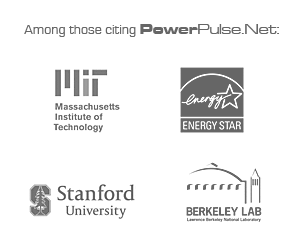How to Leverage the PAR4 Metric (UL2640) for an Energy Efficient Data Center

Data centers waste an enormous amount of energy because they are designed for peak application workloads and high availability, and not for efficiency. However, there is no need to sacrifice energy efficiency to increase application availability.
Data centers waste an enormous amount of energy because they are designed for peak application workloads and high availability, and not for efficiency. However, there is no need to sacrifice energy efficiency to increase application availability.
The ultimate goal of energy efficiency should be energy proportionality. That is, the energy being consumed should be directly proportional to the work being performed by the applications running on the servers in the data center. “Measuring for managing” application-level energy efficiency and increasing energy proportionality requires knowing Tps/Watt, WI and WP, and these and other useful metrics are now provided with dependable accuracy by the PAR4 Energy Efficiency Rating System that is part of the UL 2640 Test Method for Server Performance standard from Underwriters Laboratories.
The PAR4 Energy Efficiency Rating System is based on a rigorous benchmark testing methodology that overcomes the limitations and eliminates the vagaries of other energy efficiency metrics to produce more accurate and actionable results.
The PAR4 benchmark performs tests to measure power consumption during a server’s three states of operation: Off (plugged into an active outlet but not powered on), Idle (booted but running no processes or applications), Loaded (running at 100% of CPU capacity) plus show the Peak (the highest measured amount of power consumption) and Tps/Watt. Each of these states is important at different times and under different circumstances in a server’s operation. Obtaining accurate and standardized power and efficiency measurements as provided by PAR4 from servers can improve uptime, save money, increase capacity and achieve many other benefits in the data center. Outlined below are the five uses of PAR4 measurements that are expected to be the most common.
Maximizing Data Center Capacity
Advances under Moore’s Law have increased server capacity dramatically while energy efficiency improvements have reduced the power demand of new equipment. To maximize the capacity in a data center, one should look at the transaction capacity and peak power consumption of equipment as it is deployed and compare it against the latest most efficient models to find out what capacity increase can be accommodated within the limits of the data center.
Minimizing Stranded Power
Power gets stranded whenever the power provisioned to any rack substantially exceeds the peak power the systems it contains can actually consume.
The usual cause of stranded power is the use of notoriously conservative nameplate or datasheet ratings. These ratings usually specify the maximum power consumption possible by the server’s power supply, and that only rarely (and usually never) actually occurs, even under peak workloads.
Knowing the actual peak power (WP) consumed by the server at 100% load makes it possible to fill racks closer to the provisioned power and reduces stranded power.
Managing Server Capacity Dynamically
Underutilized servers are the primary source of waste in data centers. Energy continues to be wasted during periods of low application demand and due to the requirements for redundancy. This is causing a growing number of IT managers to begin questioning the wasteful “always on” mode of operating servers, and to consider replacing it with a more energy-efficient “on demand” approach.
Dynamic configurations can achieve utilization rates that approach or exceed 80 percent on those servers that remain powered on, and have the ability to reduce energy consumption by 50 percent or more in most environments.
Such dynamic power management (DPM) requires a tool like Power Assure’s ”Software-Defined Power” that is capable of matching server capacity to the current application workload in real-time.
Maximizing Application Availability
Over half of all application downtime is now caused by problems related to power as virtualization and software defined abstraction isolates applications from previous generation hardware failures.
As the automatic transfer switch, uninterruptible power supply and backup generator do not always work as planned, maintenance procedures fail and outside power grid issues effect the data center, power outages can occur and even when short and isolated, just bringing down a single IT component can require hours of application recovery time. Furthermore, disaster recovery procedures, aimed to mitigate against such problems might need manual intervention as well. In fact a study by Symantec found that more than 25 percent of disaster recovery failover tests fail. Even routine failover procedures require error-prone manual intervention 80 percent of the time.
Dynamic Power Management (DPM) by its nature maximizes application reliability by leveraging existing failover and/or load-balancing capabilities to shift workloads between data centers in a way that utilizes the power source with the highest availability, dependability and quality. It also allows proactive migration in case of planned maintenance work or other indicators for potential risk.
Pricing Commodity Computing Power
Virtually everything is now available as a service in The Cloud. The cloud concept is so popular that many organizations are also creating private clouds through virtualization and, more recently, with Software-Defined Data Center technology.
The cost-saving advantages of the cloud derive from its ability to create, in effect, a commodity at economies of scale.
In a private cloud, the commodity is “sold” to departments within the organization, whereas the organization itself becomes the customer for public cloud-based commodities. Computing power could be commoditized and sold in a number of ways, such as by the server, the CPU or even the transaction or transaction per second.
In all of these cases, energy will represent a significant percentage of cost of this commodity, and knowing the power consumption precisely is critical to pricing it appropriately.














